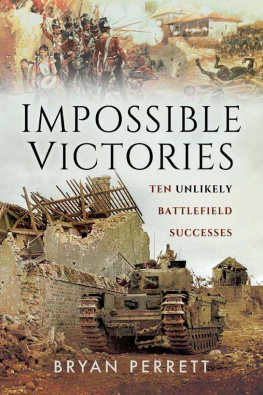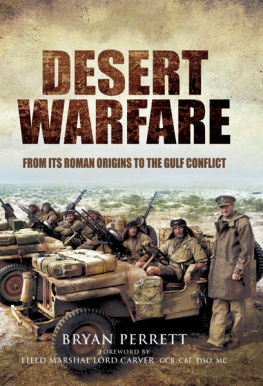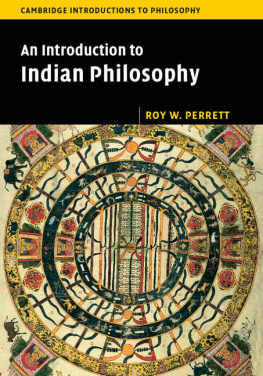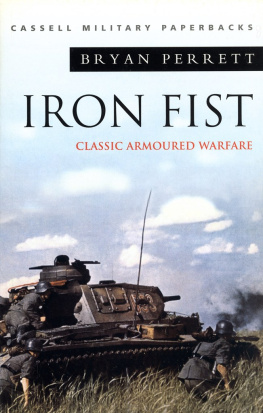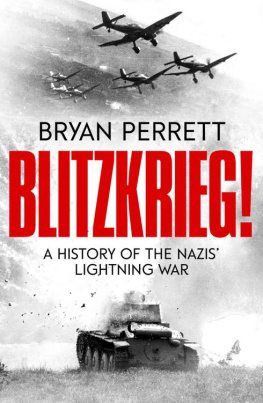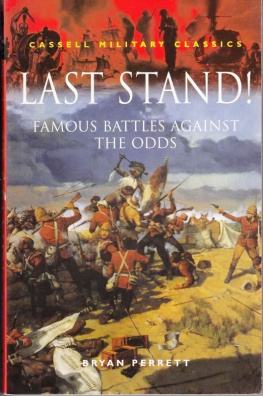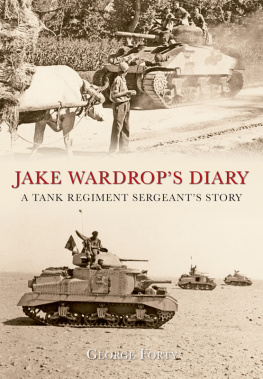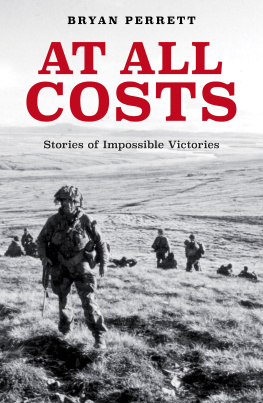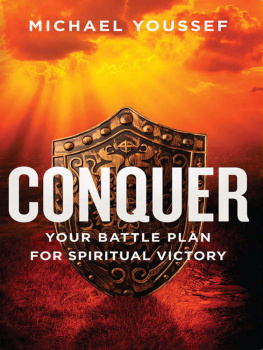IMPOSSIBLE
VICTORIES
I MPOSSIBLE
V ICTORIES
TEN UNLIKELY
BATTLEFIELD SUCCESSES
B R Y A N P E R R E T T

First published in 1996 by Arms and Armour, then by
Cassell Military Paperbacks in 2000 and reprinted in 2000, 2001, 2002
Republished in this format in 2015 by
P EN & S WORD M ILITARY
An imprint of
Pen & Sword Books Ltd
47 Church Street, Barnsley
South Yorkshire
S70 2AS
Copyright Bryan Perrett 1996, 2000, 2001, 2002, 2015
ISBN 978 1 47384 749 1
The right of Bryan Perrett to be identified as Author of this work has been
asserted by him in accordance with the Copyright, Designs and Patents Act 1988.
A CIP catalogue record for this book is
available from the British Library
All rights reserved. No part of this book may be reproduced or
transmitted in any form or by any means, electronic or mechanical
including photocopying, recording or by any information storage
and retrieval system, without permission from the Publisher in writing.
Printed and bound in England
By CPI Group (UK) Ltd, Croydon, CR0 4YY
Pen & Sword Books Ltd incorporates the Imprints of Pen & Sword Aviation,
Pen & Sword Family History, Pen & Sword Maritime, Pen & Sword Military,
Pen & Sword Discovery, Pen & Sword Politics, Pen & Sword Atlas,
Pen & Sword Archaeology, Wharncliffe Local History, Leo Cooper,
Wharncliffe True Crime, Wharncliffe Transport, Pen & Sword Select,
Pen & Sword Military Classics, The Praetorian Press, Claymore Press,
Remember When, Seaforth Publishing and Frontline Publishing
For a complete list of Pen & Sword titles please contact
PEN & SWORD BOOKS LIMITED
47 Church Street, Barnsley, South Yorkshire, S70 2AS, England
E-mail: enquiries@pen-and-sword.co.uk
Website: www.pen-and-sword.co.uk
IMPOSSIBLE
VICTORIES
ALSO BY BRYAN PERRETT
Desert Warfare
Tank Tracks to Rangoon
Canopy of War
The Czars British Squadron
A History of Blitzkrieg
Tank Warfare
Soviet Armour Since 1945
Knights of the Black Cross: Hitlers Panzerwaffe & Its Leaders
Liverpool: A City at War
Weapons of the Falklands Conflict
Last Stand!
At All Costs!
The Battle Book
Seize and Hold
Iron Fist
Against All Odds
The Taste of Battle
The Changing Face of Battle
Gunboat!
BRYAN PERRETT
IMPOSSIBLE
VICTORIES
TEN UNLIKELY BATTLEFIELD SUCCESSES
CASSELL&CO
Cassell Military Paperbacks
Cassell & Co
Wellington House, 125 Strand, London WC2R OBB
First published by Arms & Armour 1996
This Cassell Military Paperbacks edition 2000
Reprinted 2000, 2001, 2002
Bryan Perrett 1996
All rights reserved. No part of this book may be reproduced
or transmitted in any form or by any means, electronic or
mechanical, including photocopying, recording or any
information storage and retrieval system without permission
in writing from the Publisher.
British Library Cataloguing-in-Publication Data:
a catalogue record for this book is available from
the British Library
ISBN 0-304-35458-9
Designed and edited by DAG Publications Ltd.
Designed by David Gibbons; layout by Anthony A. Evans
Edited by Gerald Napier
Printed and bound in Great Britain by
Cox & Wyman Ltd., Reading, Berks.
Contents
US Rangers at the Pointe du Hoe and Omaha Beach,
D-Day, 6 June 1944
Ngok Kom Leat and Hill 875 South Vietnam,
1967
Acknowledgements
I should like to express my sincere thanks to the following for their kind advice, assistance and encouragement, without which it would have been impossible for me to start, let alone finish, this book: Louise Arnold-Friend, Reference Historian, US Army Military History Institute, Carlisle, Pennsylvania; Lieutenant-Colonel John Bullen MSc, ARMIT, Weston Creek ACT, Australia; Major John Carroll, Curator, The Keep Military Museum, Dorchester; Mr T. J. Clement, Librarian, The Kippenberger Military Archive and Library, Waiouru, New Zealand; Lieutenant-Colonel P. A. Crocker, Curator, The Royal Welch Fusiliers Regimental Museum, Caernarfon Castle; Lieutenant-Colonel C. D. Darroch DL, Honorary Archivist, The Royal Hampshire Regiment Museum, Winchester; Mr S. A. Eastwood BA AMA, Curator, The Regimental Museum of the Border Regiment, Carlisle Castle; Colonel A. Fender TD DL, The Queens Own Warwickshire and Worcestershire Yeomanry Charitable Trust; Brigadier A. I. H. Fyfe DL, The Light Infantry Office, Taunton; Mr Donald E. Graves of Almonte, Ontario, Canada; Captain Colin Harrison, Regimental Headquarters The Highlanders (Seaforth, Gordons and Camerons), Aberdeen; Mr Ian Hook, Keeper, The Essex Regiment Museum, Chelmsford; Mrs Penelope James, Curator, The Queens Royal Surrey Regiment Museum, Guildford; Mr J. P. Kelleher, Chief Clerk and Archivist, City of London Headquarters, The Royal Regiment of Fusiliers, HM Tower of London; Colonel H. J. Lowles CBE, Curator, and Lieutenant-Colonel C. P. Love, Honorary Archivist, The Worcestershire Regiment Museum Trust; Mr William McKale, US Cavalry Museum, Fort Riley, Kansas; Mr John Montgomery, Librarian, Royal United Services Institute for Defence Studies; Major J. H. Peters MBE, Curator, and Major P. J. Ball, The Royal Gloucestershire, Berkshire and Wiltshire Regiment (Salisbury) Museum; Mr Kenneth Reedie MA AMA MILAM, Curator, The Royal Museum & Art Gallery, Canterbury; Major John C. Rogerson and Major C. J. D. Haswell, respectively Curator and Honorary Historian, The Princess of Waless Royal Regiment and Queens Regimental Museum, Dover Castle; Katie Talbot, Librarian, The Patton Museum of Cavalry & Armor, Fort Knox, Kentucky; Colonel J. P. Wetherall, Curator, The Museum of the Northamptonshire Regiment; Colonel D. E. Whatmore, Regiments of Gloucestershire Museum, Gloucester; and W. H. White, formerly Curator of The Regimental Museum of the Duke of Cornwalls Light Infantry, Bodmin.
Bryan Perrett
I n his book At Dutys Call, dealing with the motivation leading to the huge expansion of the British Armys strength in 1914, the late Dr W. J. Reader made the interesting point that while every town and village has its own war memorial dedicated to those who made the ultimate sacrifice in both World Wars, there were actually very few memorials erected to those who fell in earlier conflicts, and that most of these honoured well-known local figures. In one respect this is surprising, for throughout the nineteenth century the wars against Revolutionary and Napoleonic France, lasting over twenty years, were regarded as being the United Kingdoms greatest-ever military undertaking. In another, it is not, for while his officers were considered to be socially acceptable, the Victorian soldier and his predecessors were regarded as despised figures by the public at large. The apparently sudden change of heart, of course, was the consequence of men from every walk of life serving together during the World Wars in a truly national effort. Again, collective grief following the terrible loss of life produced an understandable desire to perpetuate the memory of those who had fallen. The dead of the First World War, in particular, became known as the Lost Generation, of whom it was said they were lions led by donkeys.
If there is one thing that the study of military history teaches us, it is that not all soldiers are lions and not all generals are donkeys. Nevertheless, in this study of the motivations which led to the snatching of victories from the jaws of apparently inevitable defeats, there are a surprisingly large number of incidents in which it was the troops who won their generals battles for them.
Next page
